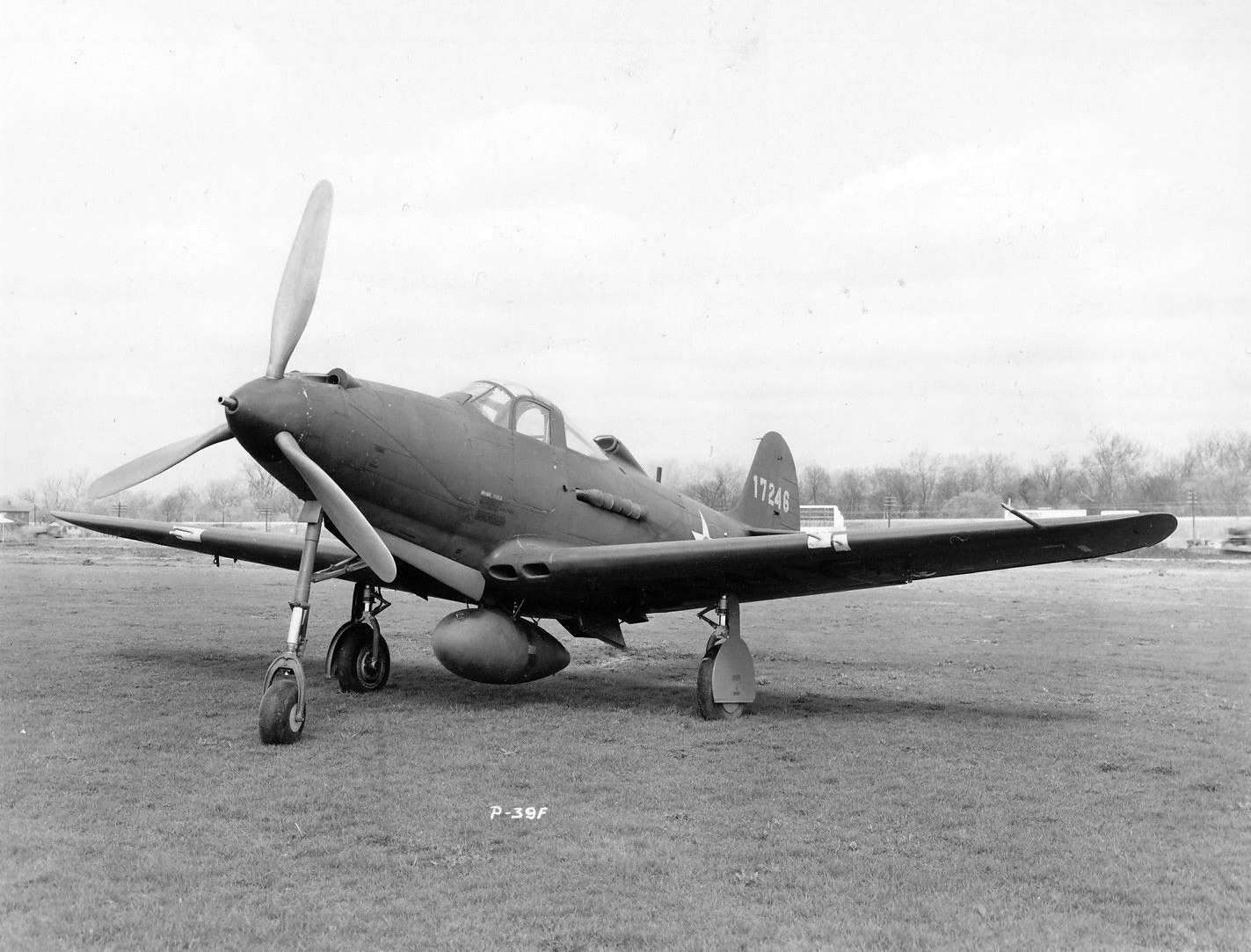The P-39F Airacobra represented another step in the evolution of the P-39 series, incorporating modifications and reverting to certain features from earlier models, while also introducing new elements to enhance performance and adaptability for different roles.
Key Features and Modifications of the P-39F:
Engine and Exhaust Configuration:
- The P-39F was powered by the Allison V-1710-35 engine, similar to most P-39D models.
- A notable difference was the inclusion of twelve exhaust stubs on each side, which was a feature previously seen in the Airacobra I/P-400 and some other variants. This configuration was intended to improve exhaust flow and engine performance.
Return to 37-mm Cannon:
- Unlike the P-39D-1-BE and P-39D-2-BE, which were equipped with a 20-mm cannon, the P-39F marked a return to the original 37-mm cannon. This larger caliber weapon would remain standard on all subsequent P-39 variants, providing significant firepower for ground attack and air combat roles.
Propeller Change:
- The P-39F replaced the Curtiss Electric propeller, which had been used on earlier models, with an Aeroproducts propeller. This propeller had a diameter of 10 feet, 4 inches, contributing to improved thrust and overall performance.
Photographic Reconnaissance Variant (P-39F-2-BE):
- Conversion for Reconnaissance:
- Twenty-seven P-39Fs were modified to serve as photographic reconnaissance aircraft. These were designated P-39F-2-BE. The modification included the installation of two cameras in the aft fuselage, similar to the earlier P-39D-3-BE and P-39D-4-BE reconnaissance variants. This adaptation allowed the P-39F to perform reconnaissance missions, capturing crucial aerial imagery during operations.
Production and Deployment:
Production Numbers:
- A total of 229 P-39Fs were produced out of an initial order of 244 aircraft. The P-39F was one of the more widely produced variants of the Airacobra series.
P-39J Variant:
- The final twenty-five aircraft from the P-39F production run were equipped with the Allison V-1710-59 engine. This engine featured automatic boost control, which helped optimize engine performance under varying conditions. To distinguish these from the standard P-39Fs, they were designated as P-39J.
Deployment:
- Many P-39Fs and P-39Js were deployed to Africa, contributing to Allied operations in the North African Campaign. Others were sent to the Aleutian Islands and the Southwest Pacific, replacing older versions of the Airacobra and participating in various combat missions in these theaters.
